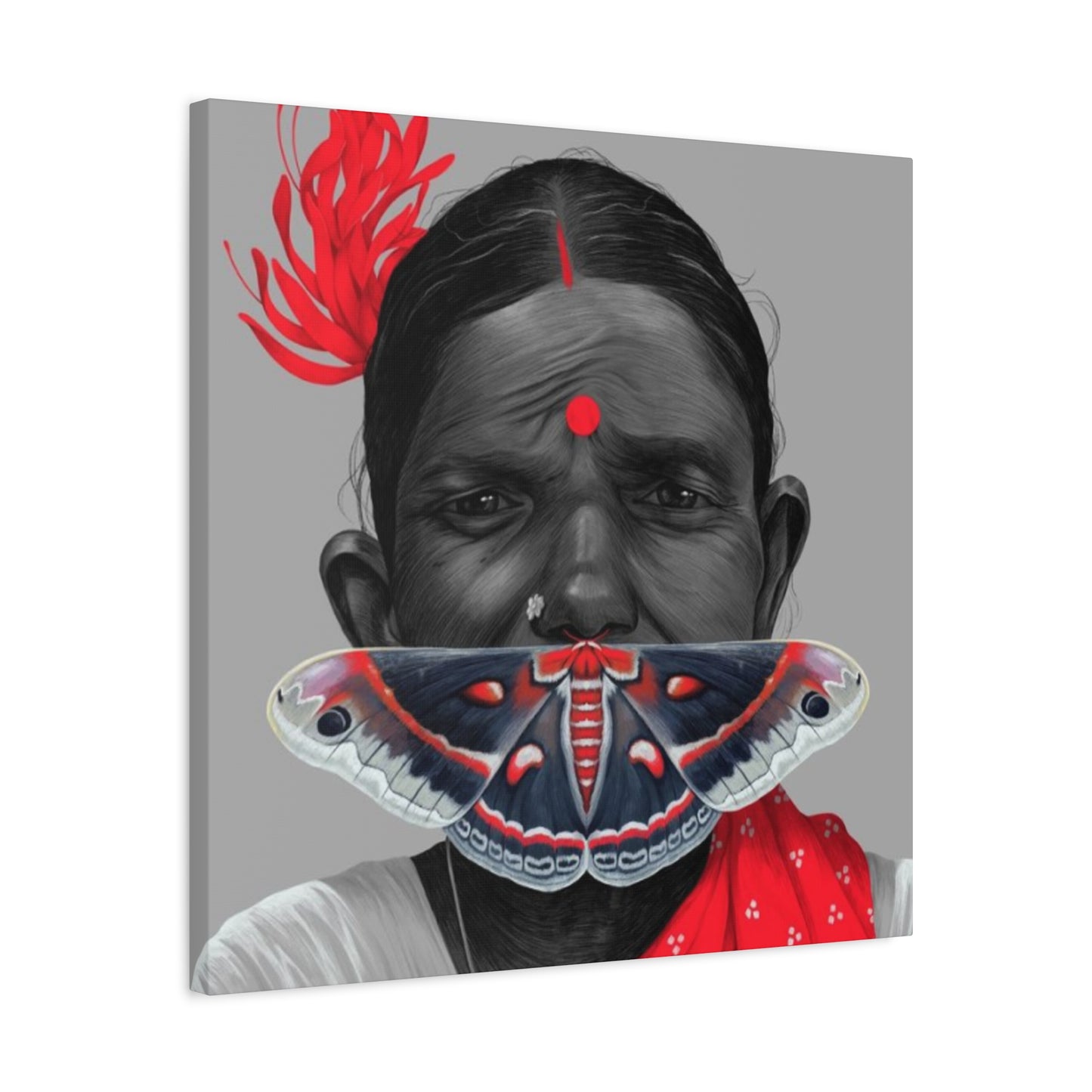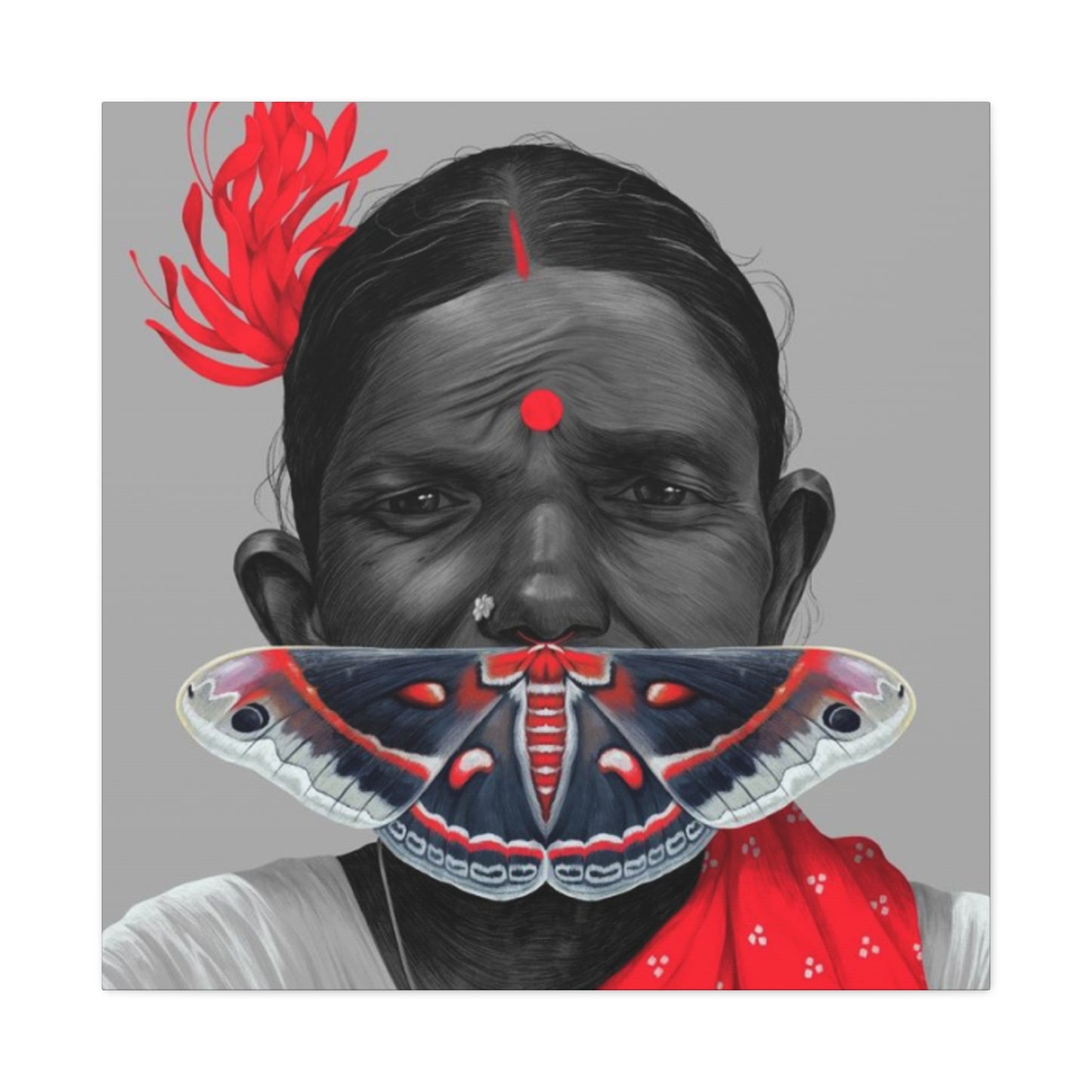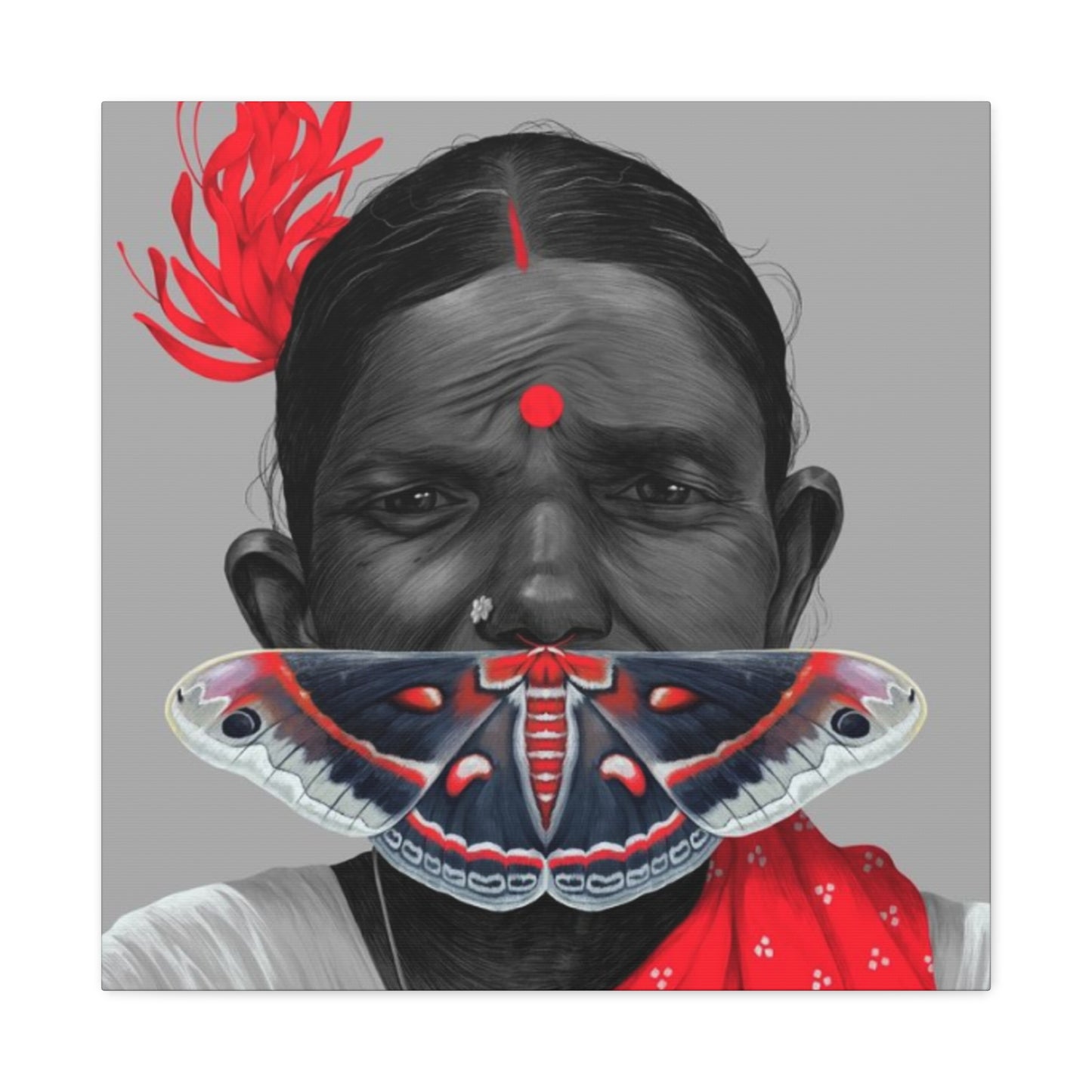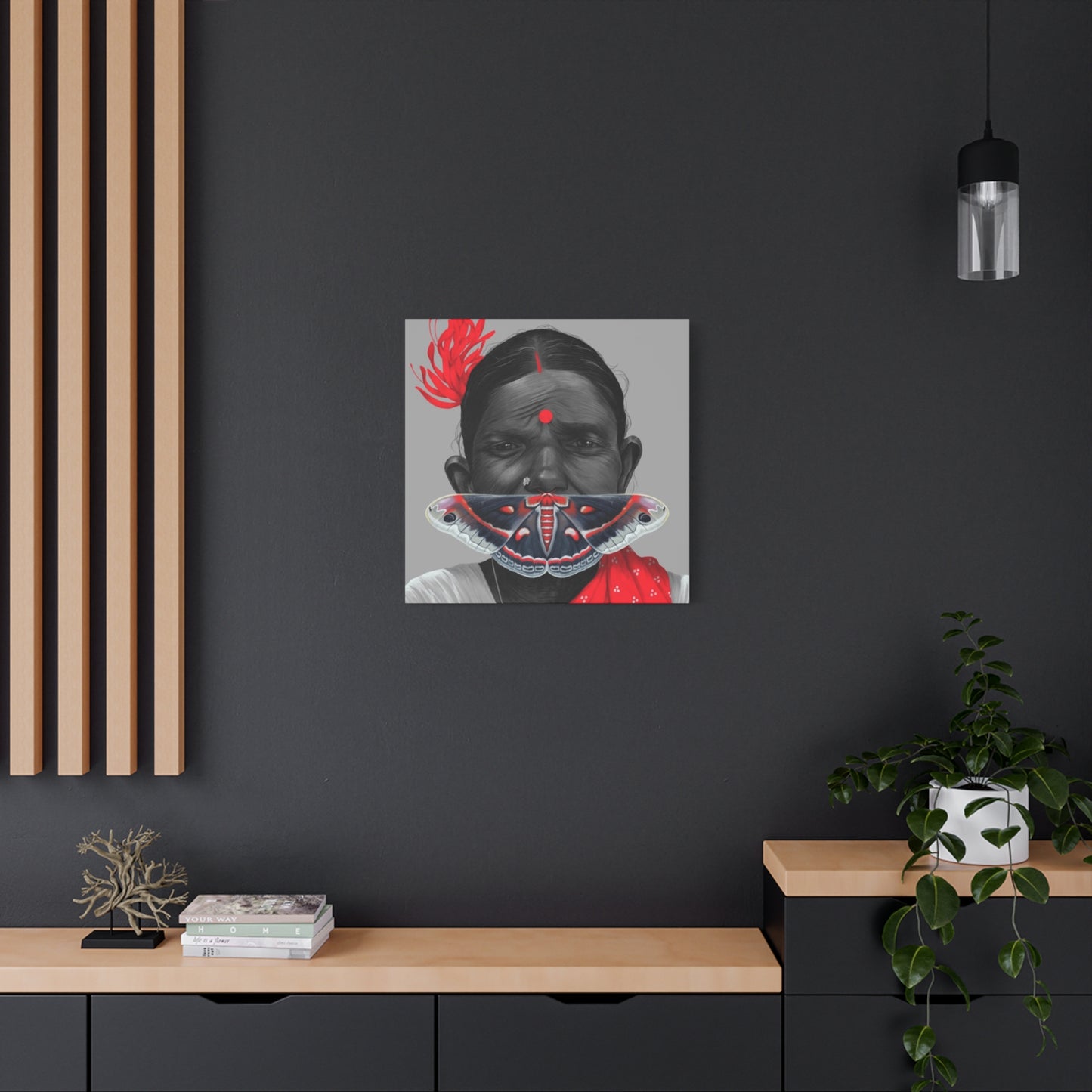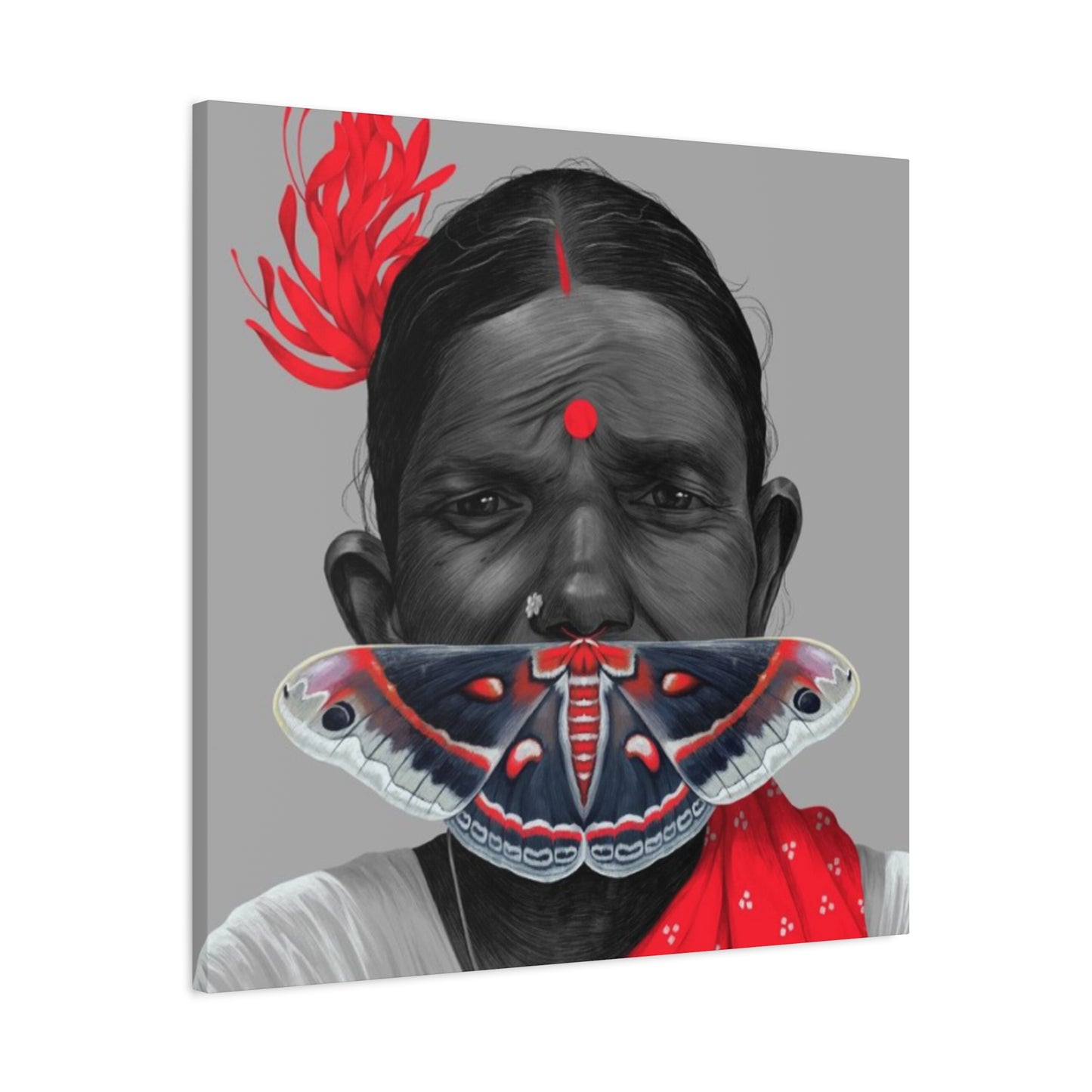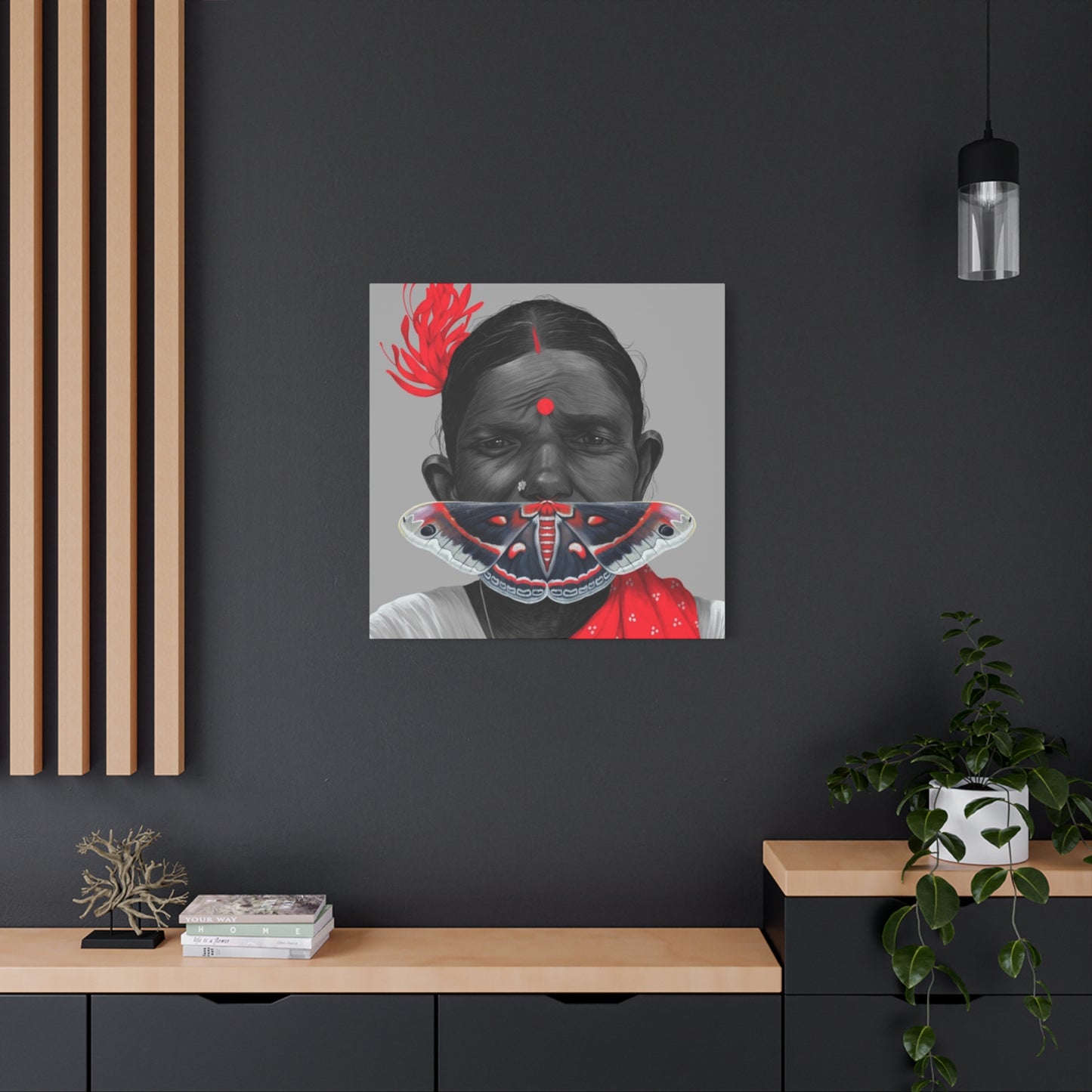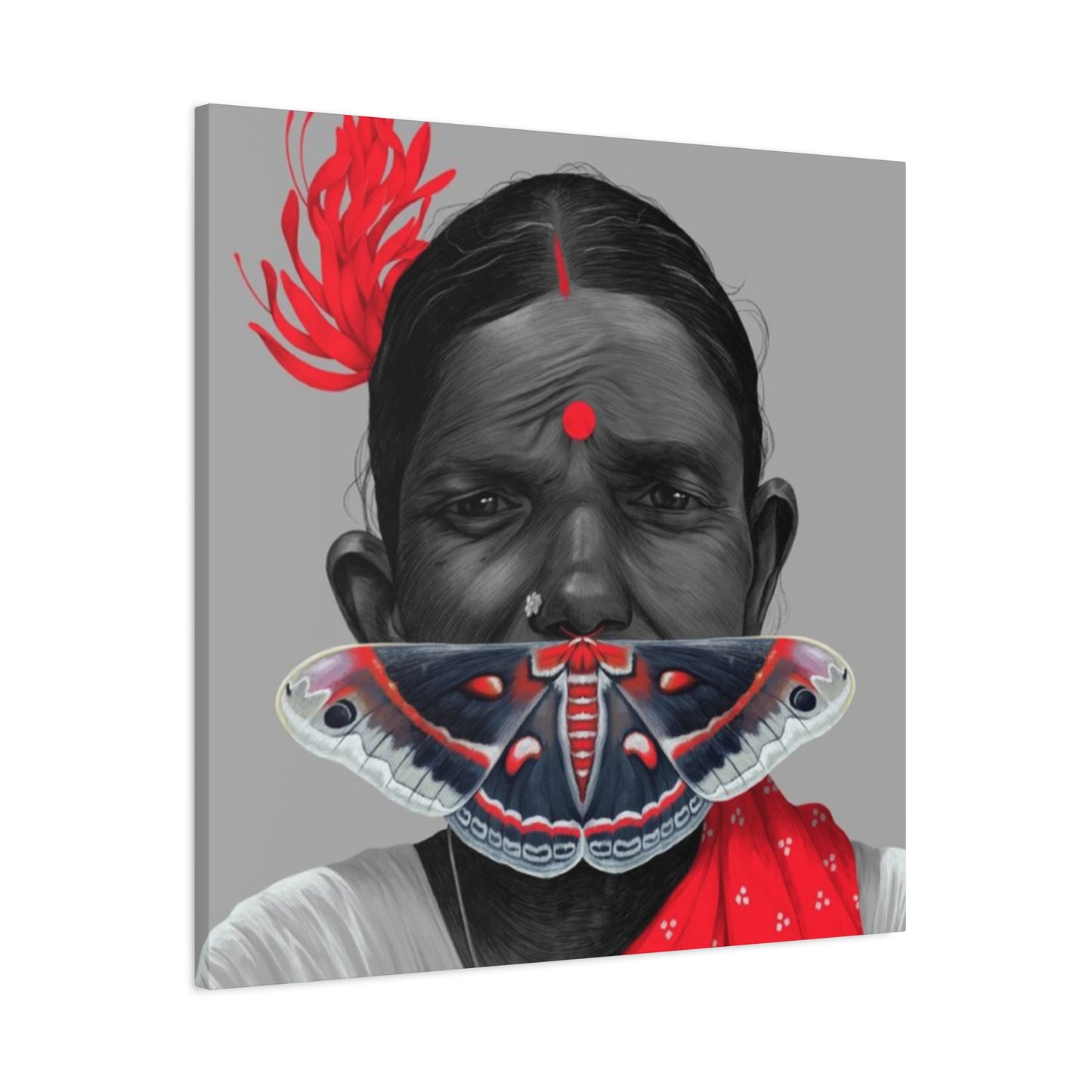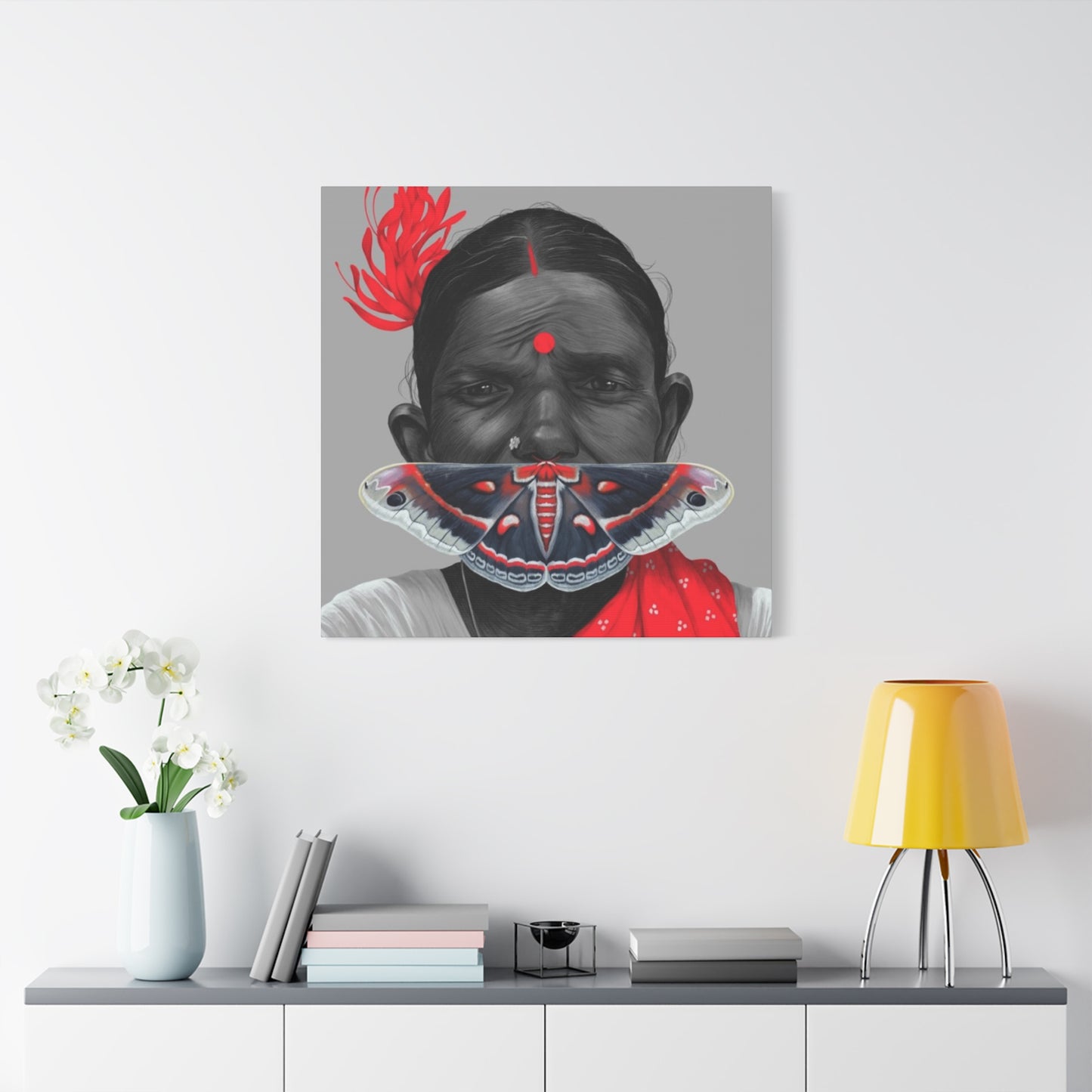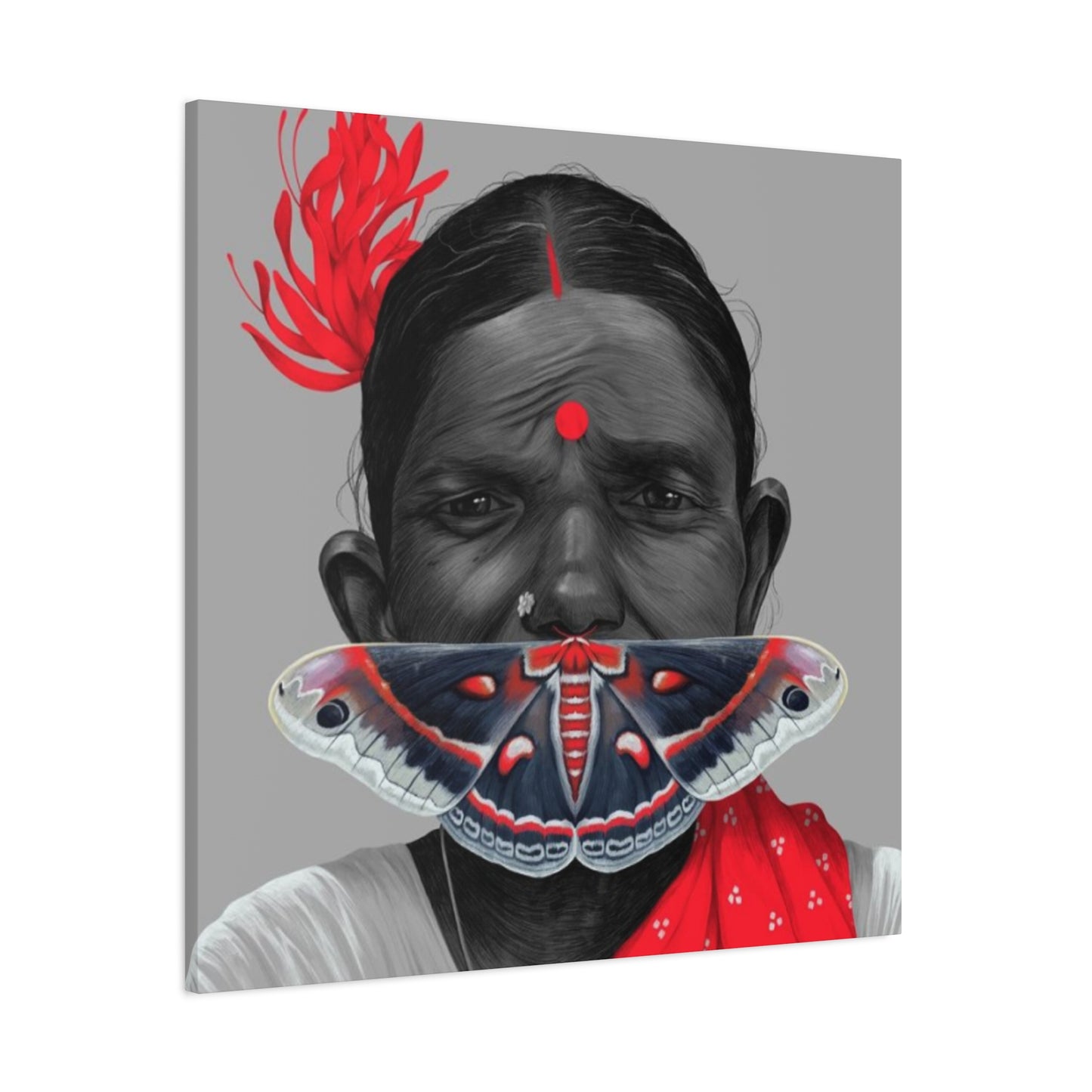Indian Women and Butterfly Wall Art: Bridging Tradition and Modern Artistic Expression
The world of contemporary canvas art has witnessed a remarkable evolution where ancient cultural narratives merge seamlessly with modern artistic expressions. Among the most captivating themes emerging in today's art landscape is the portrayal of Indian women alongside butterfly motifs, creating powerful visual stories that resonate across generations and cultures. This artistic movement represents more than mere decoration; it embodies the convergence of heritage, identity, and the timeless beauty found in nature's most delicate creatures.
Elegance and Power in Modern Indian Women Art
The representation of Indian women in contemporary canvas art has undergone a significant transformation over recent decades. Artists today are moving beyond stereotypical depictions to create nuanced, multidimensional portraits that celebrate the complexity of feminine identity within Indian culture. These artistic creations capture not just physical beauty but also inner strength, wisdom accumulated through generations, and the quiet dignity that defines countless women across the Indian subcontinent.
Modern interpretations focus on authentic representation rather than idealized versions of femininity. The faces depicted in these artworks often carry stories etched in gentle lines and contemplative expressions. Artists employ various techniques to bring depth to their subjects, using layered brushstrokes, rich color palettes, and careful attention to traditional elements like jewelry, textiles, and hairstyles that ground these portraits in cultural authenticity.
The power of these artistic representations lies in their ability to communicate universal themes through culturally specific imagery. When viewers encounter a canvas featuring an Indian woman, they are invited to contemplate broader questions about aging, wisdom, resilience, and the passage of time. These are not passive subjects but active participants in their own narratives, their gazes often direct and engaging, challenging viewers to see beyond surface appearances.
Contemporary artists working in this genre draw inspiration from multiple sources. Classical Indian painting traditions, including Mughal miniatures and Rajput court paintings, provide a foundation of compositional techniques and symbolic vocabulary. However, modern artists infuse these traditional elements with contemporary sensibilities, creating works that speak to today's audiences while honoring ancestral artistic practices.
The use of texture and layering in modern Indian women portraits adds another dimension to these works. Many artists incorporate mixed media elements, combining acrylic paints with fabric elements, metallic accents, or natural materials that reference traditional craft practices. This approach creates visual richness that rewards close examination while also making bold statements from a distance.
Color choices in these portraits often carry significant meaning. Deep earth tones might reference connection to land and ancestry, while vibrant hues of saffron, turquoise, and crimson nod to traditional textile patterns and religious symbolism. Artists carefully balance these color relationships to create harmonious compositions that feel both grounded in tradition and refreshingly contemporary.
Encounters Between Elderly Indian Women and Butterflies in Contemporary Expression
The pairing of elderly Indian women with butterflies in modern canvas art creates a visual metaphor of extraordinary power and subtlety. This artistic choice is far from arbitrary; it represents a deliberate exploration of themes related to transformation, the life cycle, and the beauty found in every stage of existence. When a butterfly appears near the face or hands of an older woman, it creates an immediate visual dialogue between human experience and natural wonder.
Butterflies have long held symbolic significance across cultures, representing transformation, rebirth, and the soul's journey. In Indian spiritual traditions, butterflies are sometimes seen as messengers between earthly and divine realms, carrying prayers and representing the eternal nature of consciousness. When placed in proximity to elderly women, these delicate creatures highlight the wisdom and spiritual depth that comes with age.
The visual contrast between weathered human skin and delicate butterfly wings creates compelling tension within the composition. This juxtaposition invites viewers to consider beauty standards and how societies value different life stages. The butterfly, often landing gently on a shoulder, hand, or hovering near the subject's face, appears as a companion rather than a mere decorative element, suggesting mutual recognition between two beings who understand transformation intimately.
Artists employ various approaches when incorporating butterflies into portraits of elderly Indian women. Some choose realistic rendering, depicting specific butterfly species native to South Asia with scientific accuracy. Others take more stylized approaches, using butterflies as abstract elements that echo patterns found in traditional textiles or jewelry. Regardless of the approach, the butterfly serves as a bridge between the natural world and human experience.
The scale relationships between subject and butterfly also carry meaning. An oversized butterfly might dominate the composition, creating a dreamlike atmosphere that suggests the thinning of boundaries between reality and imagination that can accompany advanced age and deep wisdom. Conversely, tiny butterflies scattered throughout a composition might represent memories, moments of joy, or the countless small transformations that accumulate over a lifetime.
Lighting plays a crucial role in these compositions. Artists often illuminate the butterfly with particular care, making its wings luminous and eye-catching while the human subject might be portrayed in softer, more subtle lighting. This technique creates visual hierarchy while also suggesting the transcendent quality of transformation and the way beauty can illuminate even the most contemplative moments.
The emotional tone of these works varies considerably depending on artistic intent. Some pieces exude serenity and contentment, showing elderly women in peaceful acceptance of life's changes, with the butterfly representing a welcome visitor. Others carry notes of melancholy or longing, with the butterfly serving as a reminder of youth's fleeting nature or symbolizing departed loved ones whose spirits remain near.
Honoring Wisdom Through Butterfly-Inspired Canvas Art
Creating canvas art that honors the wisdom of Indian women while incorporating butterfly imagery requires thoughtful consideration of symbolism, composition, and cultural context. These works serve multiple purposes: they beautify spaces, provoke contemplation, and preserve cultural narratives that might otherwise fade from collective memory. The best examples achieve a balance between aesthetic appeal and meaningful content.
Wisdom in Indian culture is often associated with elders, particularly elder women who serve as repositories of family stories, traditional knowledge, and practical life skills passed down through generations. Visual art that celebrates this wisdom does so through careful attention to facial expressions, posture, and contextual elements that suggest depth of experience. The addition of butterfly motifs enriches these representations by introducing natural symbolism that resonates across cultural boundaries.
Many artists working in this genre choose to portray their subjects in moments of quiet contemplation. These are not action-oriented portraits but rather meditative studies of presence and being. The subject might be shown in profile, gazing into the distance while a butterfly alights nearby, creating the impression of a shared moment of peace. This compositional choice invites viewers to slow down and engage with the artwork on a deeper level.
The incorporation of traditional elements alongside butterfly motifs creates layered meaning within these works. A subject might wear jewelry that carries family significance or religious symbolism, while the butterfly introduces natural world connections. Traditional textiles, whether shown as clothing or background elements, add patterns and colors that complement the organic patterns found on butterfly wings, creating visual cohesion.
Background treatments in these artworks vary widely but are always carefully considered. Some artists opt for abstract or minimal backgrounds that keep focus firmly on the subject and butterfly, while others create richly detailed environments that place the subject within specific cultural contexts. Architectural elements, vegetation native to South Asia, or abstract patterns derived from traditional art forms might frame the central figures.
The spiritual dimensions of wisdom representation cannot be overlooked. Many viewers approach these artworks with awareness of spiritual traditions that venerate age and wisdom as paths to enlightenment. The butterfly, with its associations with the soul and transformation, reinforces these spiritual themes without requiring explicit religious iconography. This allows the artwork to speak to diverse audiences while maintaining cultural authenticity.
Artists also explore the relationship between internal and external beauty in these wisdom-focused works. The conventional beauty associated with youth becomes secondary to the profound beauty of lived experience, of eyes that have seen much and still maintain kindness, of hands that have worked and cared for others. The butterfly, universally recognized as beautiful, serves as a companion to this deeper beauty, validating it through association.
Modernism and Traditional Elements in Remarkable Canvas Prints
The fusion of modernist artistic approaches with traditional Indian visual culture creates some of the most striking canvas prints available in contemporary art markets. This synthesis is not about superficial combination but rather about finding genuine artistic dialogue between different temporal and cultural aesthetics. When successful, these works feel both rooted in heritage and completely contemporary, speaking to multiple audiences simultaneously.
Modernist principles such as compositional boldness, experimental color relationships, and abstracted forms provide frameworks through which traditional subject matter can be reimagined. An artist might take the classical Indian practice of profile portraiture but render it with aggressive brushwork and unexpected color choices that signal contemporary sensibilities. The result challenges viewer expectations while maintaining connection to artistic lineage.
Traditional Indian art forms offer rich vocabularies of pattern, symbolism, and narrative structure that modernist approaches can amplify and recontextualize. The intricate patterns found in rangoli, textile design, and temple architecture become sources for abstract elements within modernist compositions. When these patterns surround or interact with portraits of Indian women and butterfly motifs, they create visual environments that honor tradition while pushing artistic boundaries.
The tension between flatness and depth, a key concern in modernist painting, plays out interestingly in these works. Traditional Indian painting often employed distinctive spatial conventions different from Western perspective systems, using flat planes and decorative patterning. Contemporary artists working with these influences might embrace this flatness, creating compositions where foreground and background exist in ambiguous relationship, united by pattern and color rather than illusionistic space.
Color relationships in these modernist-traditional fusion works often depart from naturalistic representation. A face might be rendered in unexpected hues, with areas of purple, green, or intense orange that signal emotional or spiritual states rather than physical reality. These color choices reference both modernist experimentation and traditional use of symbolic color in Indian religious art, where deities are often depicted in blues, greens, and other non-naturalistic skin tones.
The incorporation of text elements represents another area where modernism and tradition intersect in these canvas prints. Some artists include Sanskrit verses, Hindi poetry, or fragments of religious texts as design elements within their compositions. This practice echoes both modernist interest in typography as visual element and traditional manuscript painting where text and image coexisted on the same surface.
Scale and repetition function as powerful tools in this modernist-traditional synthesis. An artist might repeat a butterfly motif throughout a composition in varying scales and orientations, creating pattern and rhythm that references traditional decorative practices while also employing modernist principles of serial imagery. When combined with portraits of Indian women, these repeated elements create visual music that rewards extended viewing.
Material experimentation connects to both modernist innovation and traditional craft practices. Artists might incorporate gold leaf, a material with deep roots in Indian artistic tradition, but apply it using contemporary techniques that create unexpected effects. Similarly, the canvas itself might be prepared with traditional priming methods while receiving decidedly modern painted surfaces.
Elegant Portrayals of Indian Women with Butterfly Elements
Elegance in portraiture requires a delicate balance of elements that, when successfully achieved, appears effortless. In portraits of Indian women featuring butterfly elements, elegance emerges from harmonious relationships between subject, symbol, color, and composition. These works avoid overstatement, instead relying on refined execution and thoughtful design to create lasting impact.
The pose and bearing of the subject establish the foundation for elegance. Artists often choose positions that convey grace: a slight turn of the head, hands positioned with careful attention to gesture, shoulders that suggest confidence without rigidity. These postural choices reference both classical portraiture traditions and the actual bearing of women whose lives have required dignity in the face of various challenges.
Butterfly placement within elegant portraits receives meticulous attention. Rather than appearing randomly scattered, butterflies in these works occupy positions that enhance compositional flow and direct viewer attention. A butterfly might be positioned near the subject's face, creating a triangular relationship between the viewer's eye, the subject's gaze, and the butterfly. This strategic placement creates visual pathways that guide engagement with the artwork.
The rendering style for both subject and butterfly contributes significantly to overall elegance. Some artists choose refined realism with careful attention to subtle value transitions and delicate edge work. This approach creates quiet elegance that reveals itself gradually. Others opt for more economical mark-making, where each brushstroke serves clear purpose and unnecessary details are eliminated, creating elegance through restraint and confidence.
Color palettes in elegant portraits tend toward sophistication rather than mere brightness. Artists might work with limited color ranges, using subtle variations of related hues to create unity and refinement. Earth tones combined with one or two accent colors, or monochromatic schemes with careful value control, often prove more elegant than busy multicolor approaches. The butterfly's natural coloring provides opportunity for color accents that enliven without overwhelming.
Jewelry and ornamentation, when included, receive treatment that enhances rather than distracts. Traditional Indian jewelry, particularly nose rings, earrings, and forehead ornaments, appears in these portraits as integral to the subject's identity rather than mere decoration. Artists render these elements with enough detail to establish authenticity but avoid overworking them to the point where they compete with the subject's face and expression.
Textile rendering in elegant portraits of Indian women demonstrates technical skill while serving narrative purposes. The drape and fold of saris or other traditional garments receive attention that conveys fabric weight and movement. Pattern within these textiles might echo butterfly wing patterns or other organic forms, creating subtle visual relationships that unify the composition without obvious matching.
Background elements in elegant portraits are carefully calibrated to support without competing. Many artists choose atmospheric backgrounds with soft edges and minimal detail, allowing the subject to emerge clearly. Others incorporate suggestion of place through selective details: a hint of architecture, suggestion of vegetation, or abstract elements derived from traditional patterns. The background serves the elegant whole rather than demanding independent attention.
Artistic Creations That Merge Cultural Identity and Contemporary Aesthetics
The merging of cultural identity with contemporary aesthetic values represents one of the most vital movements in current art practice. For artists exploring Indian cultural themes through modern lenses, this merger is not about diluting tradition or superficially updating it but rather about finding authentic ways to express living culture in contemporary visual language. The combination of Indian women subjects with butterfly motifs provides rich territory for this exploration.
Cultural identity in visual art manifests through multiple channels simultaneously. Iconographic choices, color symbolism, compositional strategies, and even the handling of paint itself can all carry cultural significance. When artists working with Indian themes make deliberate choices about which elements to preserve, which to adapt, and which to reimagine, they are engaging in complex cultural negotiation that extends far beyond the canvas surface.
Contemporary aesthetics value authenticity, innovation, and emotional resonance. Viewers today seek art that feels genuine rather than derivative, that offers fresh perspectives rather than repetition, and that creates emotional or intellectual engagement. When applied to culturally specific subject matter like Indian women with butterflies, these contemporary values push artists toward personal interpretation rather than formulaic representation.
The balance between specific cultural identity and universal human experience creates productive tension in these works. A portrait showing an elderly Indian woman with a butterfly speaks simultaneously to particular cultural contexts and to universal experiences of aging, transformation, and connection with nature. Skilled artists navigate this balance, creating works that honor specific cultural origins while remaining accessible to diverse viewers.
Material culture references ground these artworks in tangible cultural reality. The specific patterns of a traditional textile, the distinctive style of regional jewelry, or architectural elements visible in backgrounds all serve as markers of particular cultural locations within the broad category of Indian culture. These details matter because they resist homogenization, acknowledging the vast diversity within Indian cultural traditions.
Contemporary presentation formats also play roles in this cultural-contemporary merger. While the subject matter and symbolic content may draw from traditional sources, the scale of canvas works, their framing, and their presentation in gallery or domestic contexts position them firmly within contemporary art consumption patterns. This allows traditional themes to reach new audiences and remain vital rather than becoming museum artifacts.
The dialogue between traditional craft practices and contemporary art-making approaches enriches these works. An artist might employ techniques learned from family members or community elders while also incorporating methods acquired through formal art education or personal experimentation. This technical hybridity mirrors the cultural negotiation happening at the thematic level.
Gender considerations factor significantly into artworks focusing on Indian women. Contemporary perspectives on gender, feminism, and women's agency inform how artists approach their subjects. Rather than passive or ornamental figures, women in contemporary Indian art often appear as subjects with full interior lives, as individuals shaped by but not limited to cultural traditions, as people navigating complex modern realities while maintaining connection to heritage.
Delicate Winged Creatures and Aesthetic Appeal in Indian Modern Art
Butterflies occupy a unique position in the visual arts due to their inherent beauty and symbolic richness. In Indian modern art featuring these delicate creatures alongside human subjects, butterflies function as both aesthetic elements and carriers of meaning. Their vibrant colors, intricate patterns, and association with transformation make them ideal vehicles for artistic exploration of themes related to change, beauty, and the intersection of human and natural worlds.
The aesthetic appeal of butterflies is immediately apparent. Their wings display some of nature's most spectacular color combinations and patterns, from the iridescent blues of morpho species to the complex eye-spot patterns of many common varieties found in South Asia. Artists can render these patterns with varying degrees of realism, from scientifically accurate depictions to stylized interpretations that emphasize decorative qualities over biological precision.
Scale manipulation creates interesting aesthetic effects when butterflies appear in artwork. Butterflies rendered at natural size create intimate, delicate moments within compositions. Enlarged butterflies achieve dramatic impact and allow viewers to appreciate wing pattern details that might otherwise go unnoticed. Some artists employ multiple scales within a single work, creating spatial ambiguity and dreamlike atmospheres where normal size relationships no longer apply.
The flight patterns and movement suggested by butterfly positioning adds dynamic energy to otherwise static compositions. Even when butterflies are depicted as landed or resting, their presence implies recent arrival or imminent departure. This subtle animation brings life to portraits and suggests temporal dimension, reminding viewers that they are witnessing a moment rather than a timeless, static arrangement.
Color relationships between butterfly wings and other compositional elements require careful consideration. Butterflies can serve as color accent points, introducing hues not present elsewhere in the work and creating visual excitement. Alternatively, artists might choose butterflies whose coloring echoes or complements the subject's clothing or skin tones, creating harmonious color unity. Both approaches have merit depending on artistic intent.
The translucent quality of butterfly wings presents technical challenges and opportunities. Skilled rendering can suggest the delicate transparency of wing membranes, allowing background colors or patterns to show through. This transparency creates additional visual layering and contributes to the ethereal quality that butterflies bring to compositions. Light passing through wings can be suggested through careful value control and edge treatment.
Butterfly species selection carries potential symbolic weight. Artists knowledgeable about lepidoptera might choose species with specific cultural associations or symbolic meanings. The common crow butterfly, widespread in South Asia, carries different connotations than the more dramatic red lacewing or the subtle grass yellow. These choices, while potentially lost on general viewers, add layers of meaning for those with deeper knowledge.
The biological accuracy of butterfly depiction varies according to artistic intention. Some artists conduct careful research, consulting field guides and specimen collections to achieve accurate wing patterns and body structures. Others take creative liberties, inventing hybrid butterflies or modifying natural patterns to better serve compositional needs. Both approaches are valid, though they communicate different relationships to natural world representation.
Pattern repetition found in butterfly wings resonates with pattern traditions in Indian decorative arts. The symmetrical structure of butterfly wings, with their mirrored left and right sides, echoes the bilateral symmetry often employed in traditional Indian design. Artists can amplify these pattern connections, creating visual dialogues between natural and human-created pattern systems.
Canvas Prints Celebrating the Heritage of Indian Women
Canvas prints focused on Indian women serve as vehicles for cultural celebration and preservation. These works do more than depict individuals; they honor collective heritage, acknowledge historical contributions often overlooked in mainstream narratives, and create visual records of cultural identity in a rapidly changing world. When executed with care and cultural sensitivity, such prints become meaningful additions to both private and public spaces.
Heritage celebration requires authentic engagement with cultural sources rather than superficial adoption of stereotypical imagery. Artists committed to genuine heritage representation invest time in research, consulting historical sources, speaking with community members, and developing deep understanding of the cultural contexts they aim to represent. This groundwork ensures that finished works carry authenticity that viewers can recognize even if they cannot articulate specific markers.
The diversity of Indian women's experiences must be acknowledged in any comprehensive celebration of their heritage. India contains multitudes: different regions, religions, languages, caste backgrounds, economic circumstances, and countless other factors shape women's lives and identities. Canvas prints that reduce this diversity to a single stereotype fail in their celebration mission. The most successful works acknowledge this complexity through specificity rather than attempting impossible universality.
Traditional roles and occupations provide rich subject matter for heritage-celebrating prints. Depictions of women engaged in traditional crafts, agricultural work, food preparation, or religious practices document activities that connect to centuries of cultural practice. When portrayed with dignity and specificity, these images validate women's labor and contributions often taken for granted or rendered invisible in historical records.
The passage of knowledge between generations represents another vital aspect of Indian women's heritage. Visual art can capture this transmission, showing elder women teaching younger ones, hands working together at shared tasks, or simply the presence of multiple generations suggesting continuity and connection. These intergenerational moments speak to heritage as living practice rather than museum artifact.
Regional diversity in dress, ornament, and cultural practice deserves attention in heritage-celebrating works. The distinctive styles of different Indian states and communities offer visual richness that prevents homogenization. An artist might focus deeply on a specific regional tradition, depicting Rajasthani, Bengali, Keralite, or other distinctive cultural expressions with attention to accurate detail.
Contemporary Indian women navigating modern life while maintaining cultural connections represent heritage in evolution rather than preservation. Canvas prints showing women in contemporary settings but incorporating traditional elements acknowledge that heritage is not static but rather adapts to changing circumstances while maintaining connection to roots. These works may be more challenging but potentially more relevant to contemporary audiences.
The format and presentation of heritage-celebrating prints matters. Museum-quality reproduction techniques ensure that colors remain true and details sharp, allowing these works to serve their cultural documentation and celebration purposes effectively. Proper framing and materials protect the prints while also signaling their value and importance as cultural artifacts rather than mere decoration.
Ancestral Meets Contemporary in Indian Women Artwork
The meeting of ancestral and contemporary elements in visual art creates rich possibilities for meaning-making and cultural expression. In works featuring Indian women, this temporal convergence happens both thematically and formally. Artists draw on ancestral knowledge, traditional techniques, and historical imagery while employing contemporary perspectives, materials, and presentational strategies. The resulting works exist in productive tension between past and present.
Ancestral connections in these artworks manifest through multiple channels. Subject matter itself may reference ancestors: elderly women who embody accumulated family and community history, whose faces and hands bear witness to decades of experience. The way these subjects are portrayed, with reverence and careful attention, communicates respect for ancestral wisdom and the value of connection to those who came before.
Traditional artistic techniques carried forward from earlier generations represent another form of ancestral presence. An artist who learned painting methods from a grandmother or master craftsperson carries ancestral knowledge in their hands and working methods. Even when creating contemporary works, these traditional techniques impart distinctive qualities that link present creation to past practice.
Symbolic systems developed over centuries provide ancestral vocabulary that contemporary artists can employ and reinterpret. The lotus, peacock, banyan tree, and countless other symbols carry meanings established through long cultural use. When contemporary artists incorporate these symbols, including butterflies with their transformation associations, they activate ancestral meaning-making systems while potentially adding new layers of interpretation.
Contemporary perspectives bring current concerns, sensibilities, and questions to ancestral material. An artist today might depict a traditional subject but with feminist awareness that challenges historical gender limitations. The same imagery that once reinforced women's confinement to certain roles can be redeployed to celebrate women's strength and resilience in the face of those limitations.
Technical innovation represents the contemporary side of this ancestral-contemporary meeting. New materials, digital tools, and contemporary color theory allow artists to achieve effects impossible for earlier generations. A work might employ ancestral compositional strategies but execute them with materials and techniques that mark it unmistakably as contemporary creation.
The audiences for these works live in contemporary moment while often maintaining varying degrees of ancestral connection. For some viewers, particularly those with Indian heritage, these works may trigger personal ancestral memories or connections. For others without those specific cultural connections, the works communicate more universal themes of heritage, identity, and the relationship between past and present.
Exhibition and consumption contexts position these works firmly in contemporary art world structures. Whether displayed in commercial galleries, museums, or domestic settings, the physical and social contexts surrounding these works are contemporary ones. This contemporary framing affects how the works are understood and valued, even when their content reaches back to ancestral sources.
The dialogue between ancestral and contemporary extends to questions of authenticity and innovation. Artists must navigate between honoring ancestral sources and avoiding mere replication. The goal is not to copy ancestral art but to create contemporary works that maintain genuine connection to those roots while speaking to present moment concerns and sensibilities.
Vibrant and Reflective Indian Modernism Canvas Decoration
Indian modernism encompasses a complex artistic movement that began in the early twentieth century and continues evolving today. Characterized by engagement with both Indian cultural heritage and international modernist movements, Indian modernism produces works that are simultaneously rooted and cosmopolitan. Canvas decorations emerging from this tradition, particularly those featuring Indian women and butterfly motifs, offer vibrant and reflective additions to contemporary spaces.
Vibrancy in Indian modernist work often relates to bold color usage that draws from multiple sources. Traditional Indian color preferences, the bright hues of festivals and celebrations, and modernist experimentation with pure color all contribute to palettes that energize spaces. When applied to subjects like Indian women with butterflies, these vibrant colors create immediate visual impact while also carrying cultural and emotional resonance.
The reflective quality of these works operates on multiple levels. Visually, artists might employ techniques that create actual surface shimmer: metallic paints, varnishes, or mixed media elements that catch and reflect light. Metaphorically, reflective refers to the contemplative nature of the subject matter, works that invite viewers to slow down and consider deeper meanings rather than offering only surface pleasures.
Scale considerations in canvas decorations affect their impact in residential and commercial spaces. Large-scale works create dramatic focal points, commanding attention and setting tones for entire rooms. Medium-sized pieces offer versatility, fitting various spaces while maintaining presence. Series of smaller works can be grouped to create larger visual statements while offering flexibility in arrangement.
The relationship between artwork and surrounding space deserves consideration when selecting canvas decorations. Works featuring Indian women and butterflies carry specific cultural and symbolic weight that interacts with their physical contexts. In a minimalist contemporary interior, such a work might serve as the primary cultural and visual interest point. In a space already rich with cultural objects, the same work contributes to a larger aesthetic conversation.
Color relationships between artwork and environment affect visual harmony. A canvas featuring earth tones and subtle butterfly colors might complement natural wood and neutral textile palettes. More vibrant works with saturated colors could either complement similarly bold interiors or provide dynamic contrast to more subdued spaces. There are no absolute rules, but conscious consideration of these relationships enhances overall aesthetic coherence.
Lighting significantly impacts how these canvas decorations present themselves in spaces. Natural light brings out color subtleties and creates changing appearances throughout the day as light quality shifts. Artificial lighting requires more careful consideration: warm-toned lights enhance earth tones and create intimate atmospheres, while cooler lights might better suit works with blue or green color dominance. Directed lighting can create drama and focus attention.
The emotional and psychological effects of Indian modernism canvas decorations extend beyond pure aesthetics. Faces gazing from walls create psychological presence in spaces. Depending on the subject's expression and the viewer's state of mind, this presence might feel comforting, challenging, inspiring, or contemplative. Butterflies add notes of hope, transformation, and natural beauty that affect spatial atmosphere.
Maintenance and longevity considerations matter for canvas decorations. Quality prints on proper materials and with appropriate protective treatments can last decades without significant deterioration. Placement away from direct sunlight, humidity control, and occasional gentle cleaning preserve these works for long-term enjoyment. The investment in quality materials and care reflects respect for the artwork's cultural and aesthetic significance.
Symbolic Meaning of Change in Butterfly-Themed Art
Transformation stands as the primary symbolic association with butterflies across most cultures, and this symbolism becomes particularly rich when butterflies appear in artwork featuring Indian women. The butterfly's lifecycle, from earthbound caterpillar through mysterious chrysalis to winged adult, provides a natural metaphor for personal, spiritual, and cultural transformation. Artists employing butterfly imagery tap into this deep symbolic reservoir, adding layers of meaning to their work.
Personal transformation represents one level of butterfly symbolism relevant to portrayals of women. The changes that occur across a human lifetime, particularly the profound shifts women experience through various life stages, parallel butterfly metamorphosis. Artwork showing elderly women with butterflies might suggest reflection on personal transformation, on the remarkable changes experienced from girlhood through old age, or on ongoing internal transformation that continues regardless of physical aging.
Spiritual transformation constitutes another vital dimension of butterfly symbolism, particularly relevant in Indian cultural contexts where spiritual development is often emphasized. Butterflies can represent the soul's journey toward enlightenment, the shedding of attachments and ego-identity, or the achievement of higher consciousness. When positioned near meditative or serene facial expressions, butterflies reinforce spiritual transformation themes.
Cultural transformation on societal level can also be explored through butterfly imagery. India has experienced massive cultural shifts over recent centuries and decades, moving through colonization, independence, modernization, and globalization. Artwork featuring traditional subjects like elderly women alongside transformation symbols might comment on cultural change, loss, adaptation, or resilience in the face of transformation.
The irreversible nature of butterfly metamorphosis carries significance. A butterfly cannot return to caterpillar form; transformation, once undergone, cannot be undone. This irreversibility resonates with human experience: aging cannot be reversed, major life experiences permanently change us, cultural shifts cannot be entirely rolled back. This bittersweet quality adds emotional depth to butterfly-themed art.
Multiple butterflies within a single composition can suggest accumulated transformations or ongoing processes of change. Rather than a single dramatic metamorphosis, life involves countless smaller transformations. Multiple butterflies might represent these various changes, memory of past transformations, or the continuous nature of change itself rather than discrete before-and-after states.
Color symbolism in butterfly wings adds additional layers of meaning. In Indian traditions, specific colors carry associations: saffron with sacrifice and courage, green with fertility and prosperity, red with power and passion, blue with infinity and the divine. Artists choosing particular butterfly colors activate these traditional associations alongside general transformation symbolism.
The fragility of butterflies contributes to their symbolic power. Their delicate wings, brief adult lifespans, and vulnerability to environmental conditions make them poignant symbols of life's precariousness. This fragility, when juxtaposed with elderly women who have survived decades of challenges, creates meaningful contrast between delicacy and resilience.
Seasonal associations enhance butterfly transformation symbolism. Many butterfly species have specific seasonal appearances, linking them to cycles of renewal and return. Spring butterflies might symbolize rebirth and new beginnings, while autumn species could suggest harvest, completion, or preparation for dormancy. These seasonal resonances add temporal dimensions to transformation themes.
The moment of emergence from the chrysalis, though rarely depicted directly, hovers as a powerful implied narrative in butterfly-themed art. The struggle required for a butterfly to emerge, which strengthens its wings for flight, parallels human experiences where difficulty produces strength and capability. This implied narrative enriches viewer engagement with butterfly imagery.
Honoring Indian Cultural Roots Through Modern Canvas Prints
Modern canvas prints featuring Indian subjects and motifs serve important functions in maintaining cultural connections across generations and geographic distances. For people of Indian heritage living in diaspora or younger generations with limited direct exposure to traditional culture, these artworks can serve as touchstones, maintaining visual and emotional connections to cultural roots. The combination of traditional subject matter with modern presentation formats makes these connections accessible and relevant.
Cultural roots manifest in artwork through careful attention to authentic detail. The specific drape of a sari, the distinctive style of particular jewelry types, the characteristic features of regional faces, architectural elements in backgrounds—all these details anchor artwork in specific cultural realities rather than vague generalities. This specificity matters because it honors the diversity and richness of Indian cultural traditions.
Language and script elements can enhance cultural root connections in canvas prints. Some artists incorporate text in Sanskrit, Hindi, or other Indian languages, either as primary design elements or subtle background features. For viewers literate in these languages, such text creates additional layers of meaning. For those who cannot read the script, the visual appearance of the writing still signals cultural specificity.
Religious and philosophical concepts from Indian traditions inform many canvas prints, even those without explicitly religious imagery. Concepts like dharma, karma, maya, or moksha might shape how subjects are portrayed or how compositional elements relate to each other. Understanding these underlying concepts enriches appreciation, though the works should also function for viewers unfamiliar with these frameworks.
Family and community connections often drive both creation and acquisition of these cultural prints. An artist might create work honoring their grandmother or representing their community's traditions. A buyer might purchase a print because it reminds them of family members or connects them to childhood experiences. These personal connections give the artwork significance beyond pure aesthetics.
The role of women in maintaining and transmitting cultural traditions makes their representation in these prints particularly significant. Women have historically served as primary teachers of language, culture, religious practice, and countless other traditions to younger generations. Artwork honoring Indian women thus honors the cultural transmission role they have played across centuries.
Contemporary presentation allows traditional cultural content to feel relevant rather than relegated to the past. When cultural imagery appears in modern formats, appropriate for contemporary homes and spaces, it signals that this heritage is living and current rather than historical artifact. This contemporization helps maintain cultural vitality across generations.
Educational functions of culturally rooted canvas prints should not be underestimated. For children growing up with limited exposure to their cultural heritage, artwork featuring traditional subjects provides visual familiarity with cultural elements. This early exposure can spark curiosity and questions that lead to deeper cultural learning and connection.
The balancing act between cultural specificity and broader appeal presents challenges for artists and marketers. Works that are too specific might have limited appeal beyond particular communities, while works that are too generalized risk cultural appropriation criticism or simply lack the authenticity that gives them genuine value. Successful works maintain cultural integrity while remaining accessible.
Rich Hues and Refined Forms on Canvas
The visual impact of canvas art depends substantially on color and form choices that artists make. In works featuring Indian women and butterflies, rich color palettes and carefully considered forms create immediate aesthetic appeal while also carrying deeper meanings. The interplay between color and form establishes mood, directs attention, and communicates content that extends beyond literal subject representation.
Rich hues in Indian-themed artwork often draw from traditional color sources that have long histories in the subcontinent. Natural dye colors from plants like indigo, turmeric, and madder have influenced color preferences for centuries. These historically significant colors appear in contemporary work not through historical replication but through contemporary color mixing that echoes traditional sensibilities while achieving modern intensity and permanence.
Earth tones including ochres, siennas, and umbers ground many compositions, creating warmth and suggesting connection to land. These colors reference Indian soil and landscape, appear in traditional building materials, and resonate with skin tones that allow realistic rendering of subjects. When contrasted with more vibrant hues in clothing or butterflies, earth tones provide stable visual foundations.
Jewel tones such as deep blues, emerald greens, ruby reds, and rich purples bring luxury and intensity to compositions. These colors reference precious stones traditional to Indian jewelry-making and appear in silk textiles and religious imagery. When applied with skill, jewel tones create sumptuous color experiences that reward sustained viewing through subtle variations and interactions.
Refined forms in portraiture require understanding of facial structure, how features change with age, and how to suggest three-dimensional form on two-dimensional surfaces. Artists working in realistic modes employ careful value control to model forms, creating convincing illusions of volume and depth. Those working in more stylized modes still reference underlying structure, distilling complex forms to their essential characteristics.
Conclusion
Indian women and butterfly wall art together create a powerful visual narrative that bridges the rich heritage of traditional Indian culture with the dynamic possibilities of modern artistic expression. This fusion is not just a decorative trend but a meaningful dialogue between past and present, symbolizing transformation, freedom, and resilience. Butterflies, universally known for their metamorphosis, serve as a poignant metaphor for the evolving role of women in Indian society—an evolution marked by strength, grace, and a delicate balance between cultural roots and contemporary identities.
Traditional Indian art has long celebrated the feminine form, often highlighting women’s roles in mythology, spirituality, and everyday life. From intricate Madhubani paintings to the bold colors of Rajasthani frescoes, women have been both muse and artist, embodying beauty, fertility, and devotion. However, butterfly wall art introduces a new layer of symbolism that resonates with today’s globalized world, where Indian women are redefining themselves beyond conventional boundaries. This artwork emphasizes transformation and liberation, mirroring the journeys many women undertake in challenging societal norms and embracing new opportunities.
Moreover, butterfly motifs complement the vibrancy and intricacy of Indian art styles, blending seamlessly into traditional patterns while adding a contemporary touch. This blend is reflective of how modern Indian women negotiate their identities—honoring tradition while asserting individuality. The wall art becomes a space where cultural continuity and innovation coexist, inspiring viewers to appreciate the complexity and depth of Indian womanhood.
Artistically, the use of butterflies alongside depictions of Indian women allows for creative experimentation with color, form, and symbolism. It invites artists and audiences alike to explore themes of growth, renewal, and the ephemeral nature of life. These themes are especially relevant in the context of Indian women’s empowerment movements, which emphasize personal and collective transformation. The art thus transcends aesthetic appeal, becoming a form of storytelling and advocacy.
In conclusion, Indian women and butterfly wall art together encapsulate a vibrant conversation between tradition and modernity. This art form not only beautifies spaces but also provokes reflection on identity, change, and empowerment. It celebrates the resilience of Indian women and their capacity for transformation, making it a compelling artistic expression that honors the past while embracing the future. Through this unique fusion, artists and admirers alike find inspiration in the timeless dance of culture, nature, and human spirit.

















